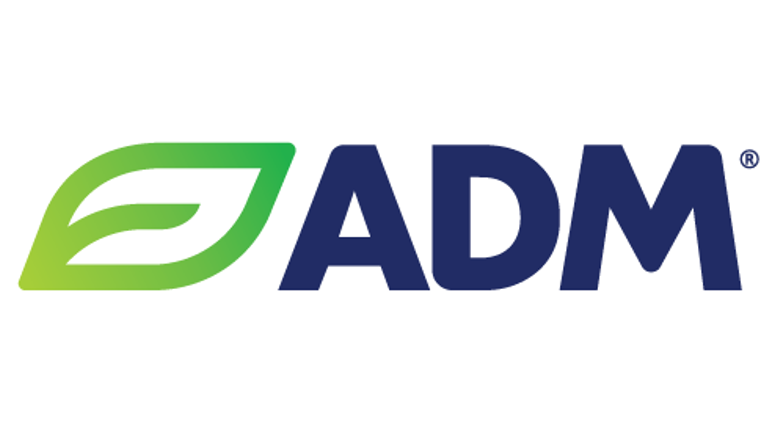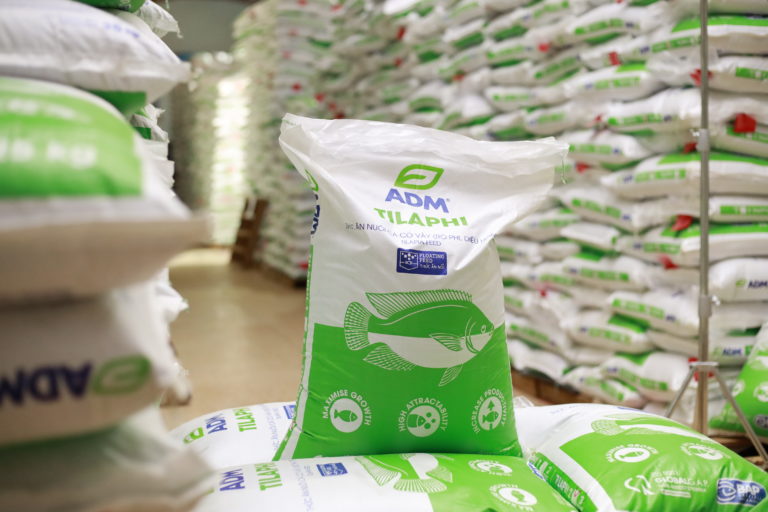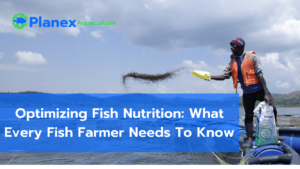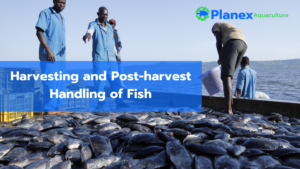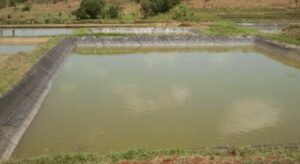ADM (Archer Daniels Midland), a global leader in agricultural processing and commodities trading, plays a crucial role in the aquaculture industry. In this informative blog, we look into the intricacies of ADM’s aqua feed production, its history, services, and the unique benefits it offers to fish farmers worldwide at the forefront of the aquaculture industry. As the global demand for sustainable seafood continues to surge, we will explore how ADM’s commitment to excellence extends to specialized tilapia fish feeds, ensuring optimal growth and health for this popular aquaculture species.
Table of Contents
ADM history and activities
ADM history

In the early 20th century, two unlikely and fortuitous pioneers, George Archer and John Daniels, laid the foundation for what would become a global agricultural powerhouse, Archer Daniels Midland (ADM). With Archer’s quiet and deliberate planning complementing Daniels’ outgoing and bold attitude, their relationship ensured success through shared passion, innovation, and perseverance.
The story of ADM began in 1902 when Archer recognized an opportunity in the linseed oil market and encouraged Daniels to act on it. Breaking ground in Minneapolis, the Daniels Linseed company started with a small, hard-working team producing linseed oil for industrial applications. Archer’s careful supervision and Daniels’ relationship-building skills proved pivotal during lean times, leading the company to turn a profit in its first year despite economic challenges. Over the decades, ADM’s strategic utilization of resources, commitment to cost-consciousness, and unwavering pursuit of excellence propelled the company to triple production capacity within a decade and expand into new markets. Today, listed on the New York Stock Exchange (NYSE), ADM’s resourcefulness continues to drive growth, enabling the company to meet ever-changing consumer demands for natural, sustainable food and beverage products, showcasing a remarkable 120-year journey from a regional linseed oil business to a global industry leader. (Read More: 1)
ADM operations and development
ADM’s mission statement is “to unlock the power of nature to enrich the quality of life.” One of the ways ADM achieves this mission is by adopting a value chain approach that ensures seamless integration across its operations and sustainability across its products and services.
1. How ADM operates across continents
ADM operates across continents, sourcing grains, oilseeds, and other raw materials from more than 460 crop procurement locations around the world. These locations include farms, elevators, ports, and processing plants, where ADM buys, stores, transports, and transforms the raw materials into various products and ingredients. ADM’s global network of crop procurement locations enables it to access diverse and abundant sources of supply, as well as to reduce its dependence on any single region or market.
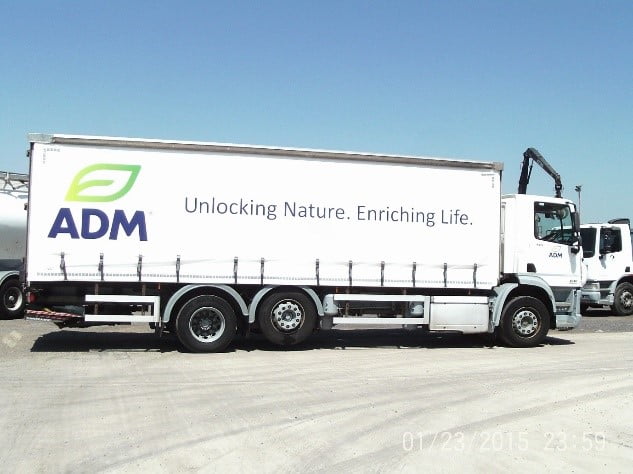
ADM’s global reach enables it to optimize production and distribution, as well as to meet the diverse needs of customers and consumers in different markets. ADM has more than 300 manufacturing facilities in over 40 countries, where it produces a wide range of products and services, such as flavors, sweeteners, proteins, oils, animal feed, biofuels, and bioproducts. ADM’s global presence allows it to leverage economies of scale, operational efficiency, and local expertise, as well as to customize its offerings to suit the preferences and demands of various regions and segments. ADM also has an extensive logistics and transportation network, consisting of trucks, trains, barges, ships, and deep-water vessels, that connects its production sites with its customers and end-users. ADM’s global logistics and transportation network enables it to deliver its products and services in a timely, reliable, and cost-effective manner, as well as to respond quickly to changing market conditions and opportunities.
2. How ADM leverages technology and innovation to enhance its production efficiency, quality, and safety
ADM leverages technology and innovation to enhance its production efficiency, quality, and safety, as well as to develop new solutions for emerging challenges and opportunities. ADM invests in research and development, digital transformation, and strategic partnerships, to improve its processes, products, and services, as well as to create new value propositions and business models. For example, ADM uses advanced analytics, artificial intelligence, and automation, to optimize its operations, reduce its environmental footprint, and increase its productivity and profitability. ADM also uses biotechnology, fermentation, and enzymatic processes, to create novel and sustainable products and ingredients, such as plant-based proteins, probiotics, and bioplastics. ADM also collaborates with customers, suppliers, universities, and other stakeholders, to co-create and co-innovate solutions that address the needs and challenges of the agricultural industry and society at large.
3. Neovia take-over and branding
ADM acquired Neovia, a leading animal nutrition company, in 2019, for approximately $1.8 billion. Neovia was a subsidiary of InVivo, a French agricultural cooperative group, and had a strong presence in Europe, Latin America, and Asia. Neovia had more than 70 production facilities and 8 research centers and offered a wide range of products and services for various animal species, such as pets, aquaculture, ruminants, poultry, and swine. Neovia also had several well-known brands, such as Wisium, Liptosa, and Bernaqua, that had a loyal customer base and a reputation for quality and innovation. ADM’s acquisition of Neovia was one of the largest deals in the animal nutrition industry, and marked a significant expansion of ADM’s aqua feed portfolio and geographic coverage. Neovia’s expertise and experience in the animal nutrition sector also enable ADM to leverage its research and development, technical support, and customer service, to provide better and more innovative solutions for the animal nutrition market.
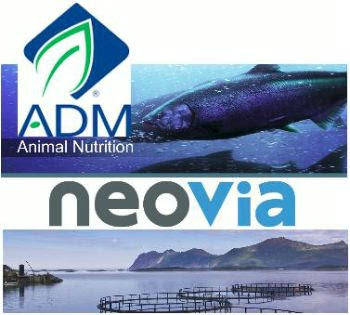
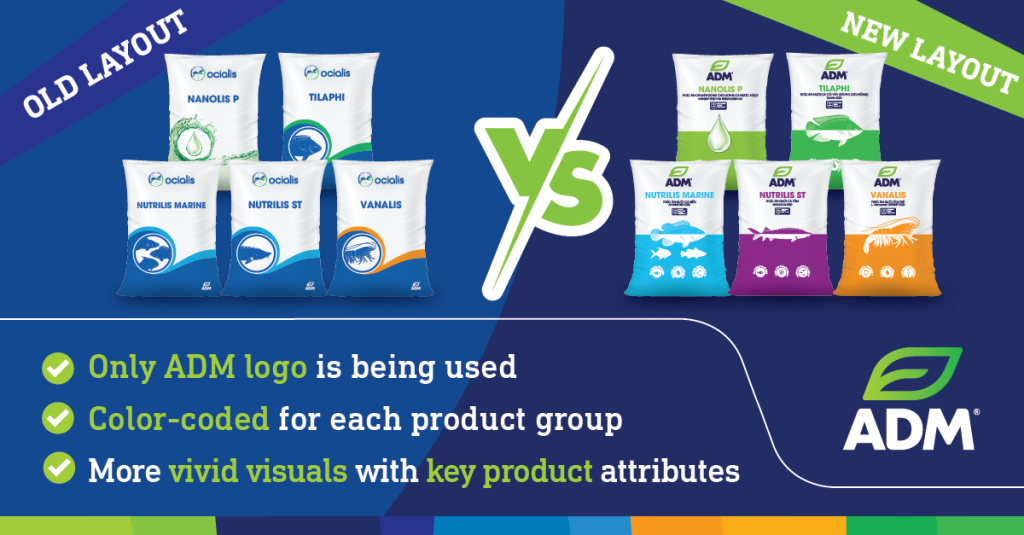
ADM aquafeed and Services
ADM provides holistic solutions to aquaculture producers around the world, from feed ingredients and additives to premixes and complete feeds, to technical expertise and support.
Ingredient sourcing and quality control
ADM sources its ingredients from various regions and suppliers, ensuring a diversified and sustainable supply chain. ADM uses both plant-based and animal-based ingredients, such as soybean meal, corn gluten meal, wheat, fish meal, fish oil, poultry by-product meal, and blood meal. ADM also uses novel ingredients, such as insect meal, algae, and yeast, to diversify its protein and lipid sources and reduce its reliance on fish meal and fish oil.
ADM follows strict quality control standards and protocols for its ingredients and feeds, from raw material reception to finished product delivery. ADM tests its ingredients and feeds for various parameters, such as moisture, protein, fat, fiber, ash, amino acids, fatty acids, minerals, vitamins, contaminants, and pathogens. ADM also conducts regular audits and inspections of its suppliers, facilities, and processes, to ensure compliance with local and international regulations and certifications.
Product and services
- Complete aquafeed: ADM produces high-quality, extruded floating and sinking feeds for various aquaculture species, such as tilapia, catfish, carp, trout, salmon, shrimp, and more. ADM’s complete aquafeed is formulated with carefully selected ingredients and additives to meet the specific nutritional requirements of each species and stage of growth. ADM’s complete aquafeed is available under different brand names, such as Ocialis, ADM Nutrição Animal, Classico, Elite, Api Camaron, and Grow Fish, depending on the region and market.
- Hatchery and broodstock solution: ADM offers specialized products and services for hatcheries and broodstock farms, such as live feed enrichment, larval and juvenile feeds, broodstock feeds, and water quality management. ADM’s hatchery and broodstock solutions are designed to enhance the survival, growth, health, and reproduction of fish and shrimp. ADM’s hatchery and broodstock solutions are available under the brands Bernaqua and Epicore.
- Wisium solutions and services: Wisium is ADM’s global premix and services brand, that provides customized solutions for aquafeed manufacturers and farmers. Wisium offers a wide range of products and services, such as premixes, functional products, feed additives, formulation software, technical support, quality control, and technical training. The main goal of Wisium is to help aquafeed manufacturers and farmers optimize their performance, efficiency, and profitability.
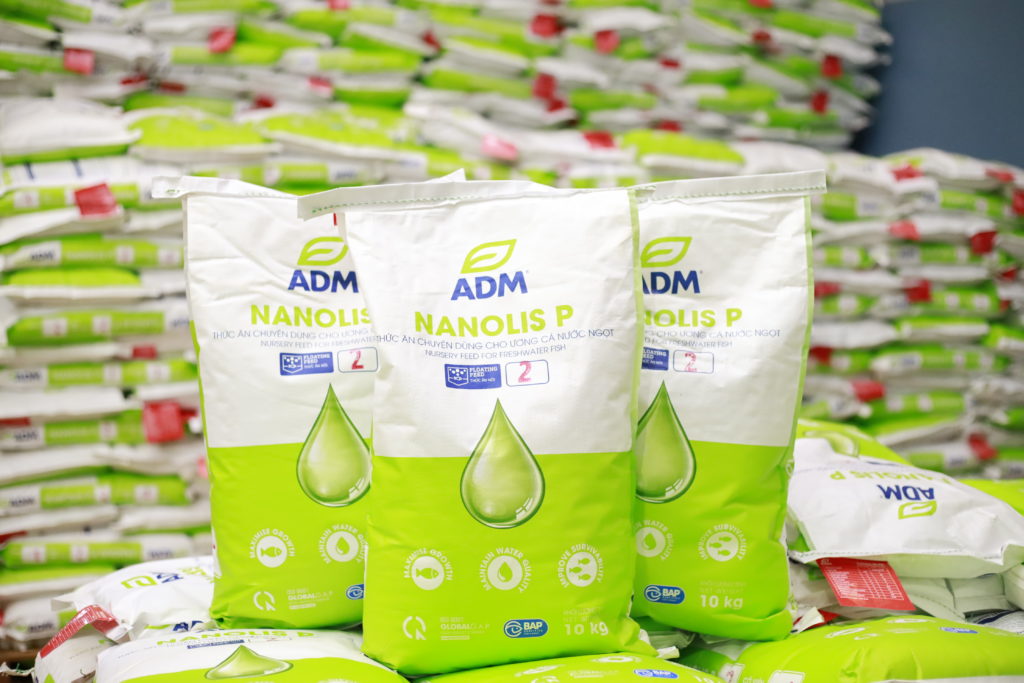
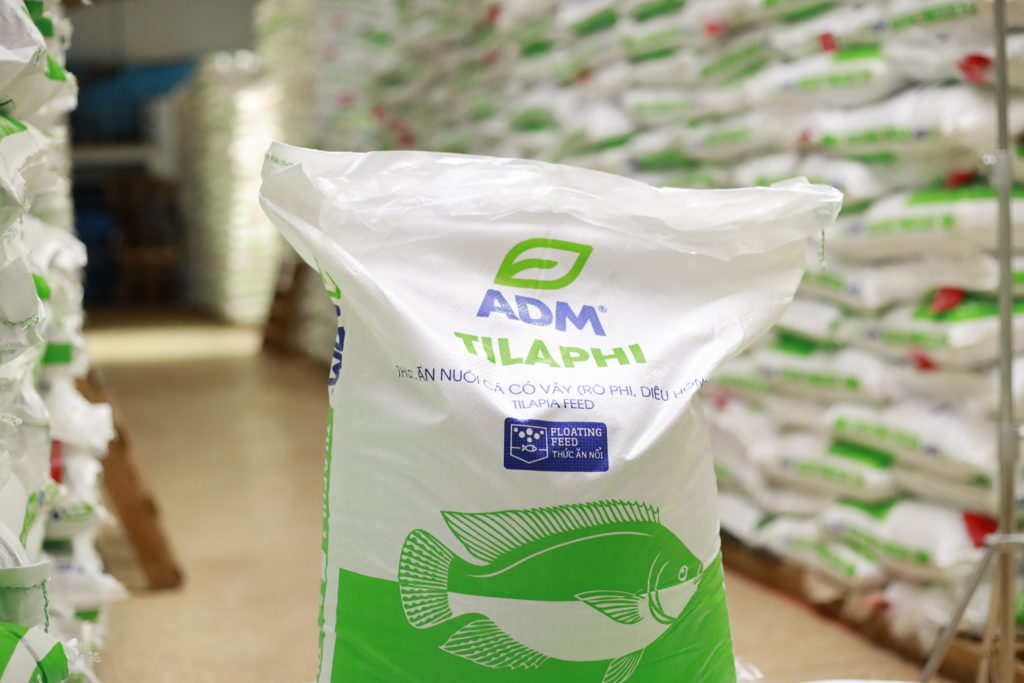
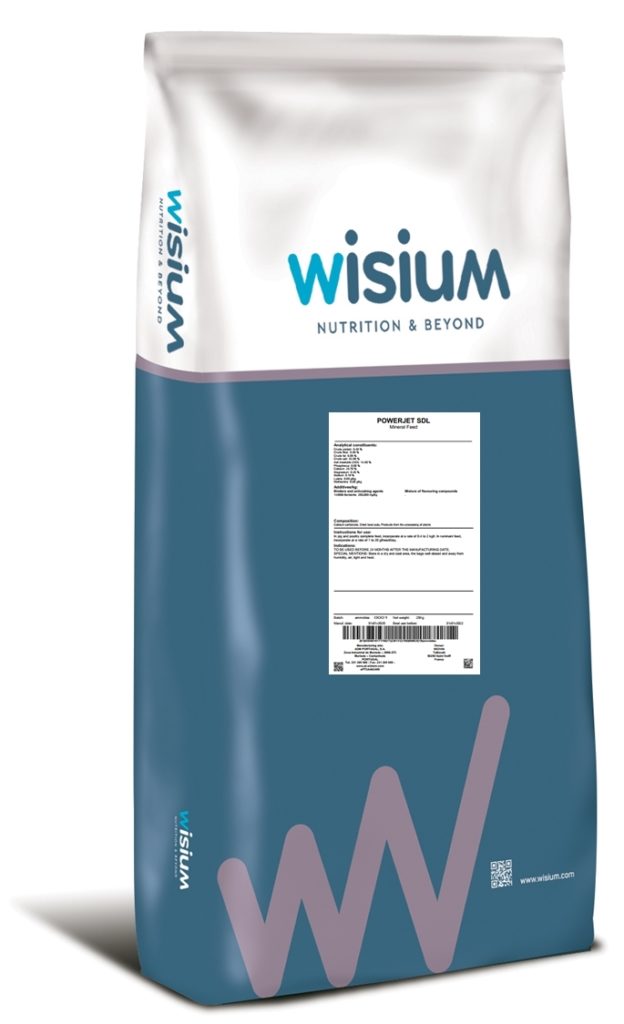
Feed types and additives
ADM produces different types of feeds for different aquaculture species and stages, such as starter, grower, finisher, and broodstock feeds. ADM also produces feeds for different rearing systems and feeding regimes, such as intensive, semi-intensive, or extensive farming, and ad libitum or restricted feeding. ADM’s feeds vary in their physical characteristics, such as size, shape, density, and durability, depending on the feeding behavior and preferences of each species. Based on the latest scientific research and data, ADM’s feeds are formulated with balanced and optimal nutrient compositions. The feeds provide the essential nutrients for fish and shrimp, such as protein, lipids, carbohydrates, fiber, minerals, and vitamins.
To enhance the nutritional value, performance, and functionality of the feeds, ADM uses various additives. Below are some of the additives that are used:
- Digestive enzymes such as proteases, lipases, and carbohydrates are used to improve the digestibility and utilization of nutrients in the feed and to reduce the waste and environmental impact of the feed.
- Probiotics such as Bacillus and Lactobacillus are used to improve the intestinal health and immunity of fish, and to prevent or treat diseases caused by pathogenic bacteria.
- Prebiotics: ADM uses prebiotics, such as oligosaccharides and yeast extracts, to stimulate the growth and activity of beneficial bacteria in the gut of fish and shrimp, and to modulate their immune system and stress response.
- Immune modulators: ADM uses immune modulators, such as beta-glucans and nucleotides, to enhance the innate and adaptive immunity of fish and shrimp, and to increase their resistance and resilience to infections and stressors.
Other additives used in the feed include antioxidants to protect protein and lipid feed components, pigments to improve the appearance of fish, and attractants and palatability enhancers to enhance feed acceptability by the fish.
R&D performance of ADM aquafeed
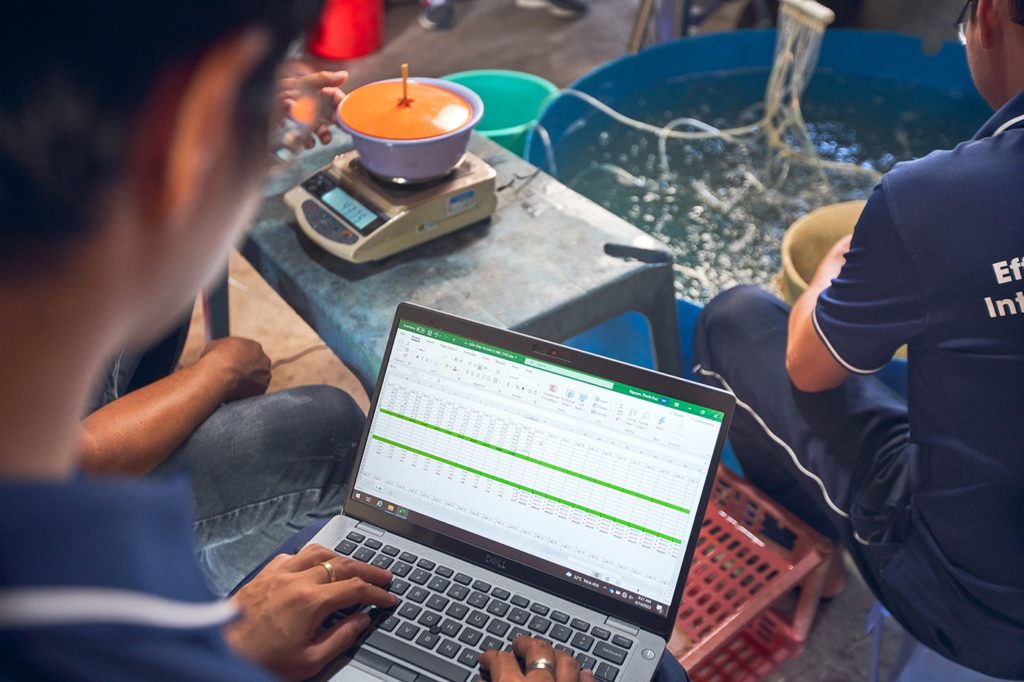
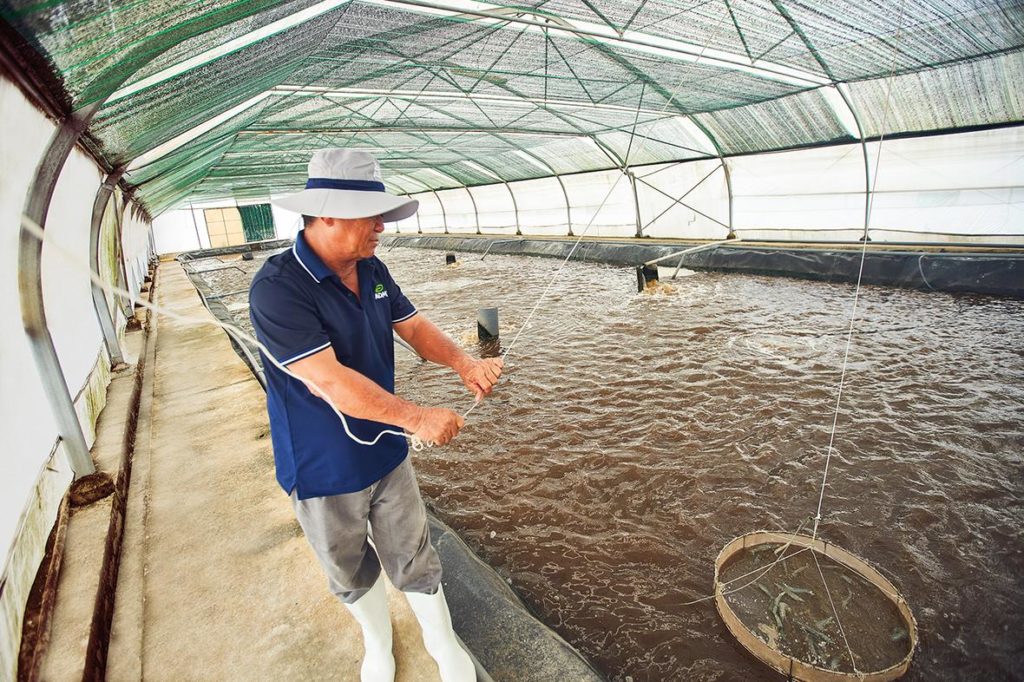
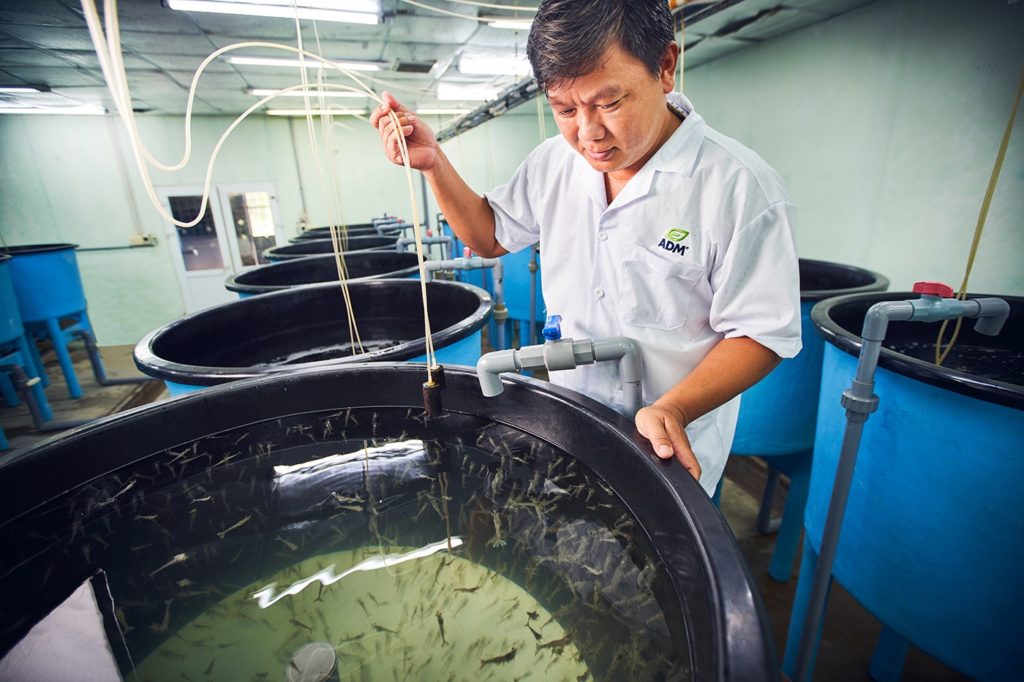
ADM invests significantly in research and development (R&D) to provide innovative and well-tailored solutions for the aquaculture industry. Let’s explore their R&D practices and how they benefit aquaculture farmers, feed millers, and consumers.
1. R&D methods and approach
ADM collaborates with research institutions, universities, and aquaculture experts to conduct cutting-edge R&D in aquaculture nutrition and health. Their R&D network spans across different regions, such as Asia-Pacific, Latin America, Europe, and North America, to address the specific needs and challenges of each market. Their dedicated centers focus on three main areas: feed formulation, sustainability, and disease prevention.
- Feed formulation
ADM’s feed formulation centers aim to develop optimal feed solutions for different aquaculture species, such as tilapia, catfish, carp, salmon, trout, shrimp, and more. They use advanced technologies, such as near-infrared spectroscopy (NIRS), to analyze the nutritional composition and quality of feed ingredients. They also use computerized feed formulation software to optimize the cost and performance of feed recipes.
- Sustainability
ADM’s focus on sustainability, responsible sourcing, and its corporate social investment program, ADM Cares, demonstrates its commitment to creating a more sustainable global food system and supporting initiatives that drive meaningful social, economic, and environmental progress. The company’s 2022 Corporate Sustainability Report highlights its activities and progress toward key environmental, social, and governance priorities across various value chains, including food and feed (2, 3) ADM also focuses on finding alternative and sustainable sources of protein and lipids for aquafeed, such as plant-based ingredients, insect meal, algae, and yeast. They also evaluate the carbon footprint, water use, and waste management of aquaculture operations and provide recommendations for improvement.
- Disease prevention
ADM’s disease prevention centers aim to improve the health and immunity of aquaculture species and reduce the reliance on antibiotics and chemicals. Continuous research is conducted on the effects of functional ingredients, such as probiotics, prebiotics, organic acids, and botanical extracts, on the gut health, microbiome, and immune system of fish and shrimp. Also, diagnostic tools and biosecurity protocols are developed to prevent and control disease outbreaks.
2. Testing processes
ADM conducts rigorous testing to evaluate the performance, palatability, and digestibility of their feed products. Both laboratory and field trials are used to assess the feed efficiency, growth rate, survival rate, feed conversion ratio, and body composition of the aquaculture species fed with their products. Measurements of the sensory attributes, such as taste, smell, texture, and color, of the feed products and the final products are also considered during testing.
The testing processes are well designed to ensure the quality, safety, and consistency of their feed products and to comply with the regulatory standards and certifications of the aquaculture industry. ADM uses quality control systems, such as ISO 9001, HACCP, and GMP, to monitor and verify the production process and the final product. They also use traceability systems, such as QR codes and blockchain, to track and record the origin, history, and destination of their feed products.
Exceptional benefits of ADM Tilapia aquafeed
1. Enhanced growth and weight gain
Tilapia, like any other farmed species, require a balanced diet to thrive. ADM tilapia fish feeds are meticulously formulated to provide the optimal blend of nutrients necessary for rapid growth and weight gain.
2. Improved feed conversion efficiency
Efficient feed conversion is essential for tilapia farming profitability. ADM tilapia fish feeds excel in this aspect:
- Optimized Nutrient Utilization: The feeds are designed to maximize nutrient absorption by tilapia. This means that a higher percentage of the feed is converted into fish biomass, minimizing wastage.
- Reduced Feed Costs: When tilapia efficiently converts feed into growth, farmers benefit from reduced feed expenses. Efficient feed utilization directly impacts the bottom line.
3. Enhanced disease resistance
It is important to note that a robust immune system is crucial for tilapia health. ADM feeds contribute to disease resistance in the following ways:
- Immune-Boosting Ingredients: The feeds contain vitamins, minerals, and other immune-enhancing components. These bolster the fish’s ability to fend off infections and diseases.
- Stress Reduction: Proper nutrition reduces stress on tilapia, making them less susceptible to pathogens. Healthy fish are more resilient and better equipped to fight against infections.
4. Sustainable aquaculture practices
ADM’s commitment to sustainability extends to their thoughtful process of producing fish feeds:
- Responsibly Sourced Ingredients: ADM ensures that the raw materials used in their feeds come from sustainable and ethical sources. This consequently minimizes the impact fish farming may have on the environment.
- Industry Contribution: By choosing ADM feeds, fish farmers actively participate in sustainable aquaculture practices. They play a role in conserving aquatic ecosystems and supporting responsible fish production.
- Feed quality: ADM fish feed is responsibly formulated with high floatability rate and stability or pellet integrity. This ensures that the pellets are eaten by the fish before disintegrating and polluting the water. This significantly reduces the impact on the environment.
ADM's commitment to support it's Partners
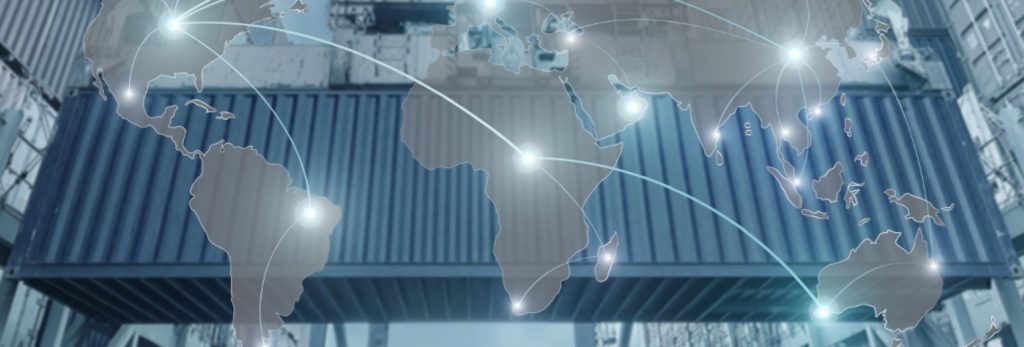
Customer success stories
Farmers worldwide have witnessed remarkable results with ADM aqua feeds. Improved yields, healthier fish, and efficient production boosting business profitability are common success stories. Here are some examples:
- Shrimp farmer in Ecuador: This farmer was looking for a way to increase his shrimp production and reduce his feed costs. He decided to try BernAqua and Epicore products, which are specialized and high-quality feeds for the early life stages of shrimp. He was amazed by the results: his shrimp grew faster, healthier, and more resilient to diseases. He also noticed that he needed less feed to achieve the same weight gain, which lowered his feed conversion ratio. As a result, he increased his production by 20% and reduced his feed conversion ratio by 10%, which boosted his profitability and competitiveness (4)
- In Argentina, ADM’s Golden Peanut and Tree Nut business implemented recycling programs and sent peanut hulls to a local utility to produce electricity. This reduced waste to landfill and provided a renewable energy source. They also supported local schools and hospitals with donations and equipment (5)
- In Kenya, ADM partnered with the World Food Programme to provide high-quality seeds and training to smallholder farmers. This resulted in improved agricultural production, food security, and income for the farmers. What’s more, about two-thirds of the total seeds planted in Tana River, Kenya, were drought-resistant, increasing yields and incomes to the community (6)
Shipment distance and time
ADM’s strategic locations and efficient logistics ensure timely delivery to farms globally. ADM has a vast network of production facilities, warehouses, and distribution centers across the world, which allows it to supply aqua feeds to customers in over 140 countries.
ADM also has a dedicated team of logistics experts, who monitor and manage the shipment of aqua feeds from the source to the destination. ADM leverages advanced technologies, such as GPS tracking, RFID tagging, and blockchain, to ensure the traceability, security, and quality of the aqua feeds throughout the supply chain.
Fully aware of the importance of delivering aqua feeds on time and in good condition to its customers, ADM strives to minimize shipment distance and time. This is meant to optimize the transportation modes and routes. ADM also offers flexible and customized delivery options, such as bulk, bagged, or containerized, to suit the needs and preferences of its customers.

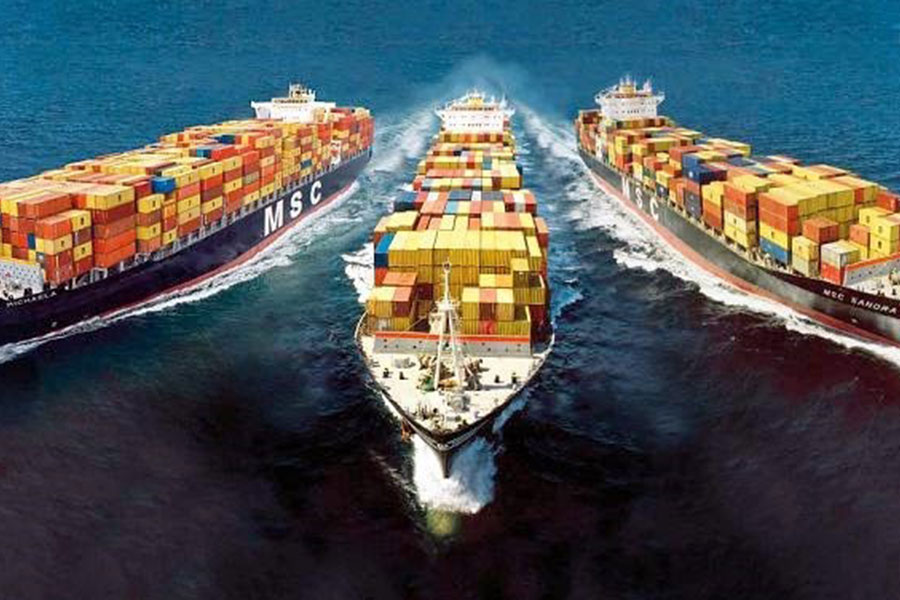

On-farm feeding performance
ADM fish feeds consistently perform well on fish farms, translating into better yields and profitability. The feeds are designed to meet the specific requirements of different fish species, life stages, and farming systems. ADM uses the latest research and innovation to develop and improve its aqua feed formulas, which are based on the best available ingredients and additives. Over time, ADM feeds have proven to deliver good results in terms of growth, FCR, survival, health, and product quality.
ADM fish feeds are well formulated to minimize the impact of aquaculture, by reducing the use of fishmeal and fish oil, increasing the inclusion of alternative protein and oil sources, and enhancing the digestibility and utilization of the feed. ADM agricultural products comply with the standards and certifications of various environmental and social organizations, such as the Aquaculture Stewardship Council (ASC), the Global Aquaculture Alliance (GAA), and the World Wildlife Fund (WWF).
Customer care & services
ADM’s customer-centric approach includes technical support, training, and troubleshooting assistance. ADM values its customers and aims to build long-term and mutual relationships with them. ADM provides the following services to its customers:
- Technical support: ADM has a team of qualified and experienced aquaculture specialists, who are committed to providing technical support and guidance to customers on various aspects of fish farming, such as pond management, water quality, disease prevention, and feed management. ADM also offers online and offline tools, such as valuable E-books, calculators, manuals, and brochures, to help customers optimize their feed usage and performance.
- Training: ADM organizes regular training sessions and workshops for farmers, covering key topics such as best aquaculture practices, feed nutrition, feeding techniques, and feed safety. ADM also hosts customers at its training facilities and demo farms, to learn from its experts and practically see its operations firsthand.
- Troubleshooting assistance: ADM responds promptly and effectively to any issues or complaints that may arise regarding customer usage of its products. ADM investigates and resolves the problems as soon as possible, and provides feedback.
In the business of fish farming, ADM fish feeds play a critical role. These feeds, meticulously crafted with high-quality ingredients and specialized formulation techniques, empower fish farmers to grow healthy and quality fish populations. ADM’s unwavering commitment to sustainability ensures that these feeds not only enhance growth but also contribute to the overall health of our environment.
For fish farmers seeking success, using ADM fish feeds is a strategic move. By understanding the unique nutritional requirements of tilapia and implementing effective feeding practices, farmers can unlock the full potential of their fish farming endeavors. Feel free to reach out and experience the benefits that come with considering ADM as your trusted fish feed provider.

